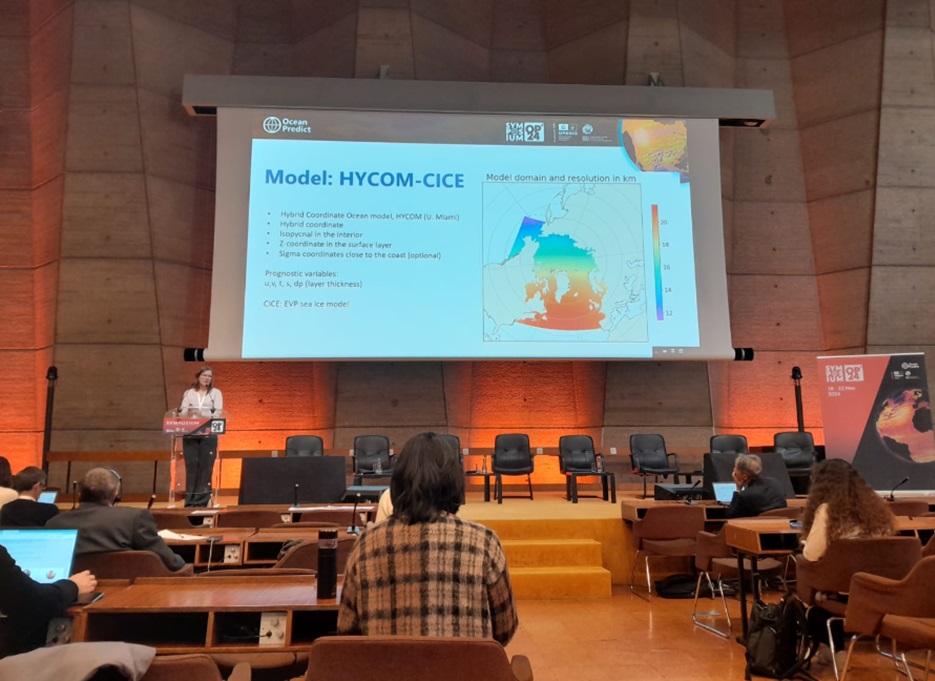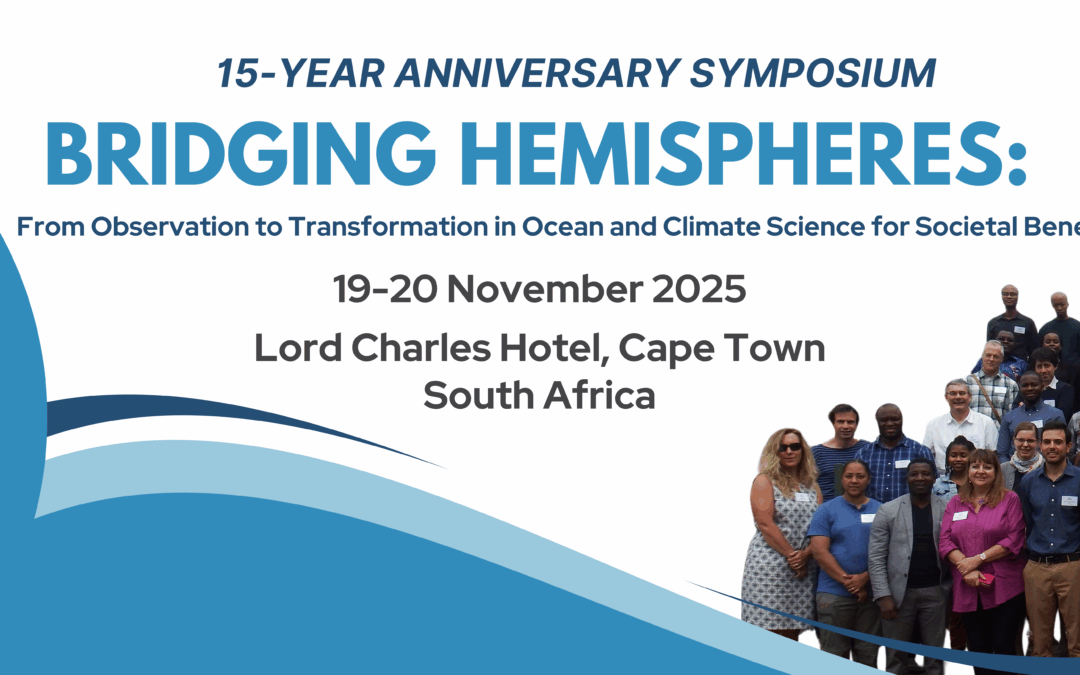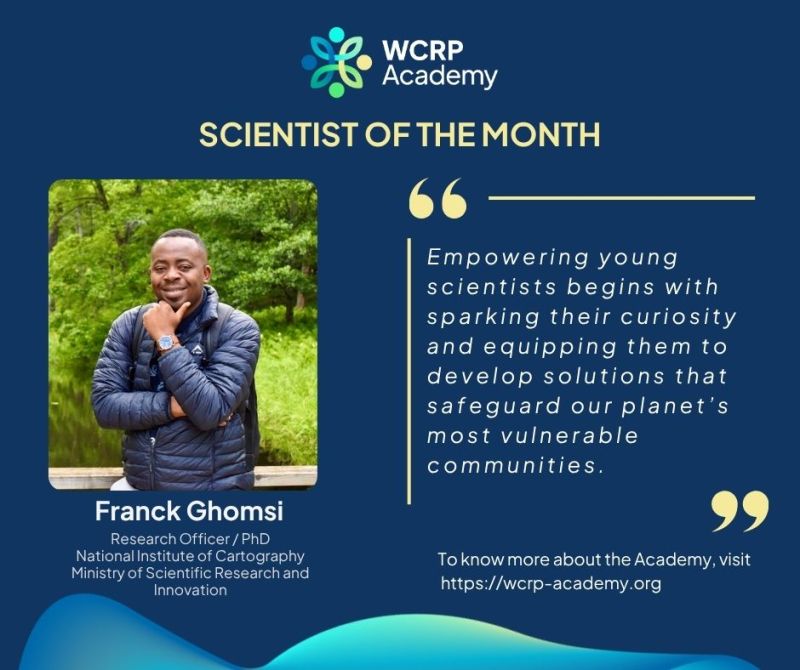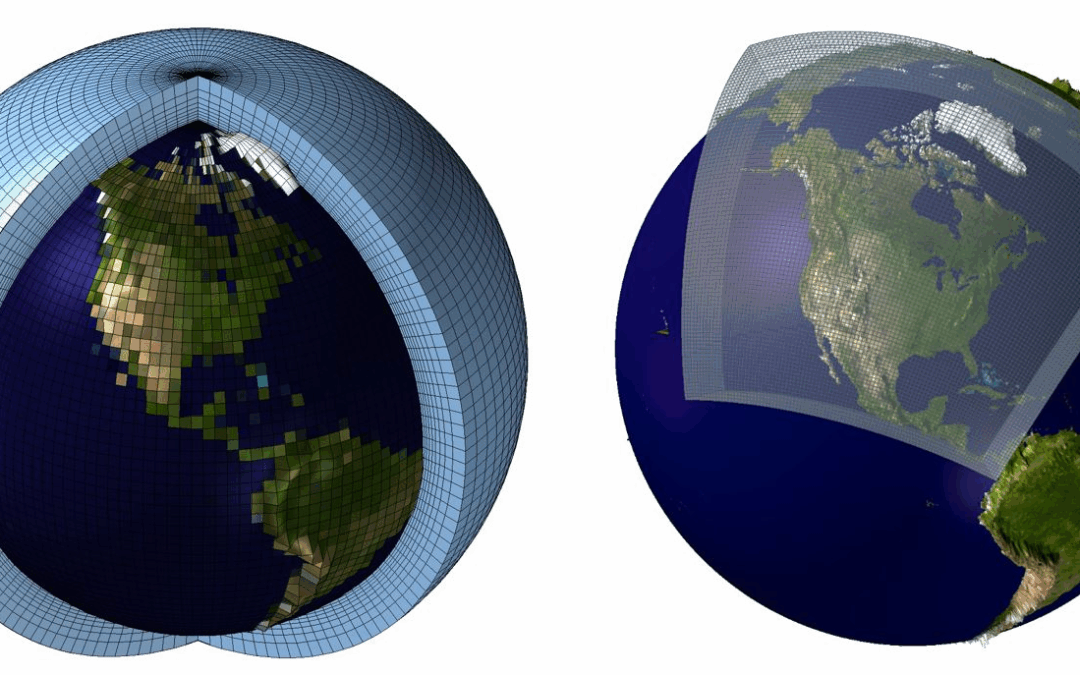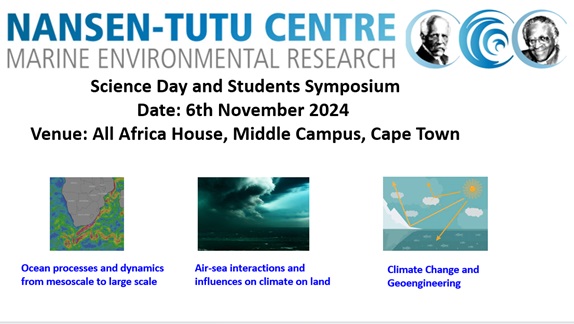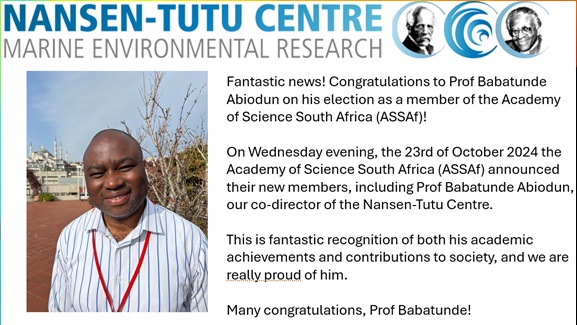This November, some of the world’s leading ocean scientists convened in Paris for OceanPredict ’24, a conference dedicated to advancing ocean prediction science. Aligned with the UN Ocean Decade goals, the symposium showcases groundbreaking research, fosters collaboration, and explores the future of operational oceanography. Among the attendees were several members of the Nansen-Tutu Centre, including Prof. Isabelle Ansorge, Dr. Annette Samuelsen, and Dr. Jennifer Veitch.
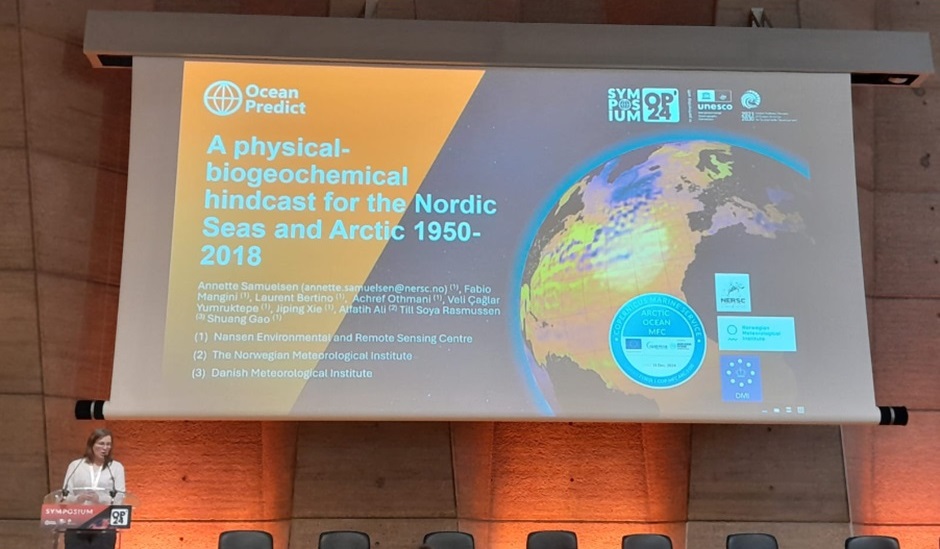
Dr. Annette Samuelsen, co-director of the NTC and leader of the Ocean Modelling Group at the Nansen Centre, shared findings from a physical hindcast model for the Nordic Seas and Arctic.
The HYCOM-based model was forced using ERA5 (atmosphere), NorCPM (ocean), and ArcticHYPE with Greenland runoff (rivers), with 50 vertical levels and initialization in September 1940. Its lateral boundaries were nudged to monthly NorCPM, running simulations from 1950 to 2018. The model outputs were compared with observational datasets, including seasonal temperature and salinity from WOA, sea level from tide gauges, and sea ice data.
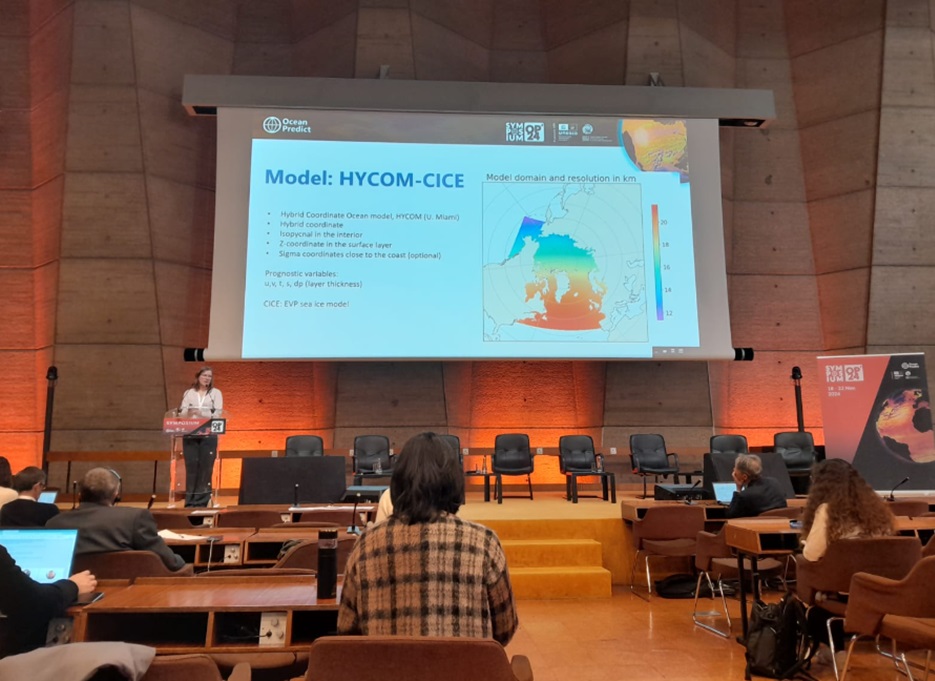
The results revealed that the model initially underestimated temperature but showed significant improvement closer to the 2000s. However, a salinity bias in the Arctic region raised questions about potential impacts on circulation. Dr. Samuelsen’s presentation highlighted both the achievements and ongoing challenges in modeling Arctic systems regarding a hindcast with a longer time period, providing critical insights for future work such as the biogeochemical coupling of the model.

